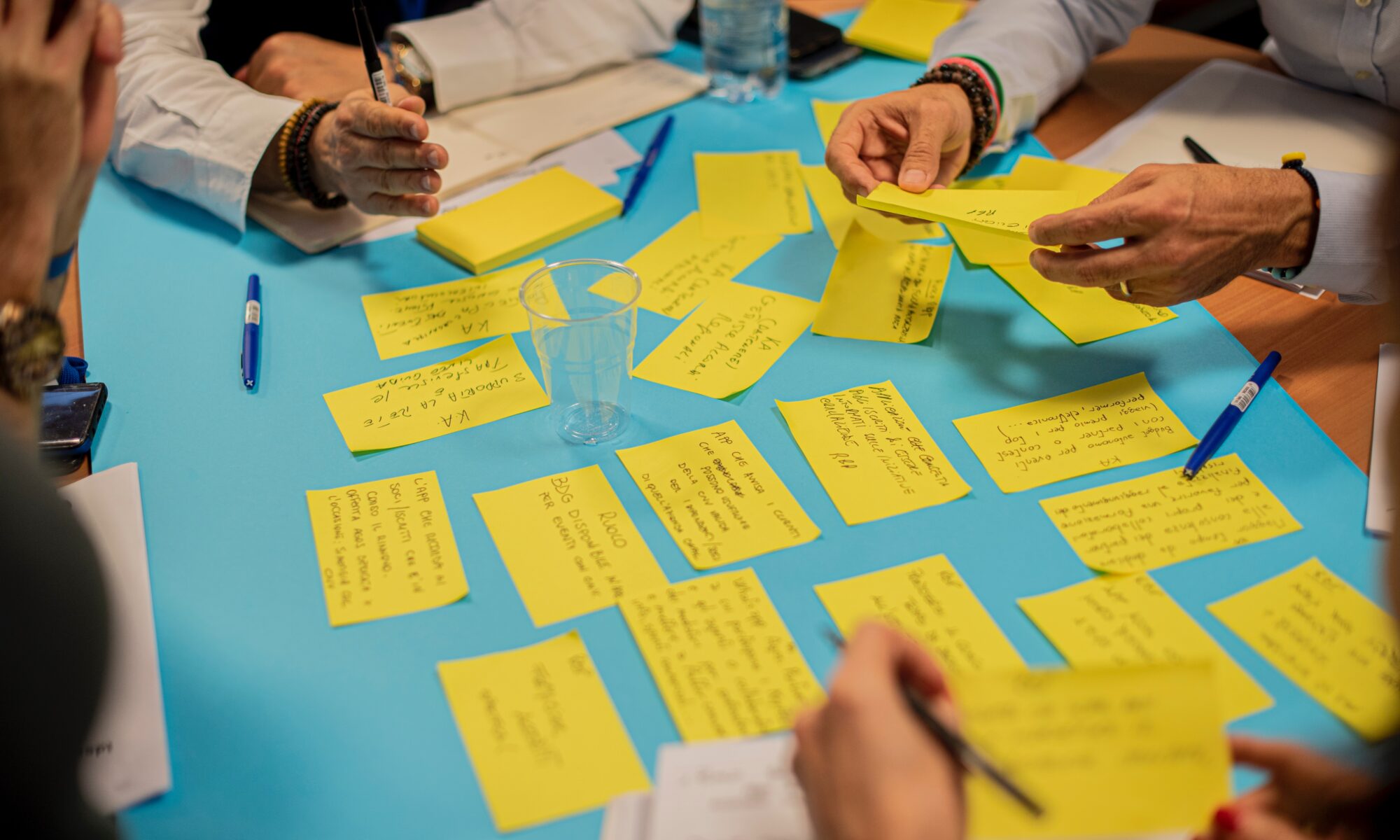The tiny piece of paper with glue on one edge has been a part of the consulting toolbox for quite some time. Early on as an (overrated) gimmick, almost as if the use of postits in itself demonstrated meeting facilitation that was dynamic, engaging and creating results. A small colourful confirmation of the saying about consultants: hot air in a nice-looking wrapping.
Now, when I hand out piles of post-its to groups joining a workshop, I see the rolling of eyes with a few participants: “*sigh*, again?” But, after more than 30 years in the tech industry and with thousands (!) of meetings and workshops behind me, I STILL have not found a tool that beats the post-it note.
Group work is the favourite discipline of noone. Herarchies and asymmetrical power relations cannot be put aside, and in addition to those you can add personal tendencies to talk/listen too much/little. If everyone in the group shall contribute, then the framework and the tools must support it – it does not happen by itself.
I find it useful to divide group work into individual and common phases, and below I bring an example from a workshop on psychological safety. The task at hand is to improve psychological safety in the team’s weekly meeting.
After a brief plenary introduction to the topic itself and the group work process, the first phase is individual work – in silence and within a clearly defined timeframe. Individual work is great for generating statements for later common prioritization and discussion, and the format gives time and peace to think each for him/herself. The mission for this phase is to find factors that inhibit psychological safety in the weekly meeting, in practice: write one statement per post-it note illustrating inhibiting factors. As many postits as practically possible.
Then follows a short phase of common work: individual contributions are sorted and a vote is held: which are the most important to solve. The result after this phase is a number of statements, developed and selected by the entire group, not just the particularly well-spoken or senior in rank.
Then, back to individual work! This phase takes more time and generate a LOT of ideas on how to help remove the most important inhibiting factors. Each participant writes his/her own list, and the list should be TOO long, to a point where the ideas in reality become silly or meaningless – because it’s funny and you get to the actual end of your creativity. The phase is concluded with a few minutes where each participant selects the best ideas from own list – and write them on post-its.
Group work has now been going on for half an hour, and most of the time it’s been quiet.…….
The last phase is common work and involves a vote – the best ideas are selected – and then: discussion and further detailing. Group work as we know it! But on a more democratic foundation, and with documentation for the entire work process at hand.
Lots of postits have been used, and it is good for every participant to see the discarded – a bunch of ideas that were good, but just not good enough and the pile itself evidence of the group’s hard work – as well as the selected ones, with loads of voting dots!
Could other tools than post-its be used for this kind of work? For sure! I am aware that there are also digital platforms offering excellent post-it-like functionality. But the colourful scraps are wonderfully reliable; a low-tech tool that effectively builds abridge between individual reflection and joint solution development.
Read more about the workshop on psychological safety here.

